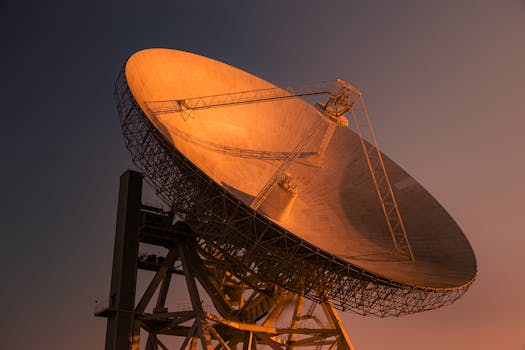Exploring the Realm of GEO Satellites: Understanding the Technology and Applications

GEO Satellites: Introduction to the Focus Keyword
GEO satellites, or Geostationary Earth Orbit satellites, are a type of satellite that orbit the Earth at an altitude of approximately 36,000 kilometers, remaining stationary relative to a fixed point on the equator. The Focus Keyword, GEO satellites, is a vital component of modern telecommunications, providing global coverage and enabling a wide range of applications, from television broadcasting to telecommunications and weather forecasting. The technology behind GEO satellites has been continuously evolving since the launch of the first geostationary satellite, Syncom 2, in 1963. Today, GEO satellites play a crucial role in modern telecommunications, providing global coverage and enabling a wide range of applications.
The history of GEO satellites dates back to the 1960s, when the first geostationary satellite, Syncom 2, was launched. Since then, the technology has advanced significantly, with the development of more powerful and efficient satellites. The design of GEO satellites typically consists of a bus, payload, and propulsion system. The bus provides the structural framework for the satellite, while the payload consists of the communication equipment, such as transponders and antennas. The propulsion system is used to maintain the satellite’s position and altitude.
Design and Launch of GEO Satellites
The design and launch of GEO satellites are complex processes that require careful planning and execution. The satellite must be designed to withstand the harsh conditions of space, including extreme temperatures, radiation, and debris. The launch process typically involves a rocket carrying the satellite into space, where it is deployed and begins its journey to geostationary orbit. Once in orbit, the satellite must be stabilized and tested to ensure that it is functioning correctly.
The applications of GEO satellites are diverse and widespread. They are used for television broadcasting, telecommunications, weather forecasting, and navigation, among other things. GEO satellites are also used for military communications, providing secure and reliable connectivity for military personnel and equipment. In addition, GEO satellites are used for scientific research, such as studying the Earth’s climate and monitoring natural disasters.
Impact and Future of GEO Satellites
The impact of GEO satellites on the telecommunications industry has been significant. They have enabled global coverage and provided a reliable means of communication, connecting people and businesses around the world. The future of GEO satellites looks promising, with the development of new technologies and the launch of new satellites. The increasing demand for satellite-based services, such as broadband internet and television broadcasting, is driving the growth of the GEO satellite market.
However, the GEO satellite industry also faces challenges, such as the risk of satellite collisions and the increasing amount of space debris. To mitigate these risks, satellite operators and manufacturers are working to develop more sustainable and responsible practices, such as designing satellites for easier disposal and using more efficient propulsion systems.
Conclusion
In conclusion, GEO satellites play a vital role in modern telecommunications, providing global coverage and enabling a wide range of applications. The technology behind GEO satellites has been continuously evolving since the launch of the first geostationary satellite, and today, they are used for a variety of purposes, from television broadcasting to telecommunications and weather forecasting. As the demand for satellite-based services continues to grow, the importance of GEO satellites will only continue to increase, driving innovation and advancement in the field of satellite technology.




